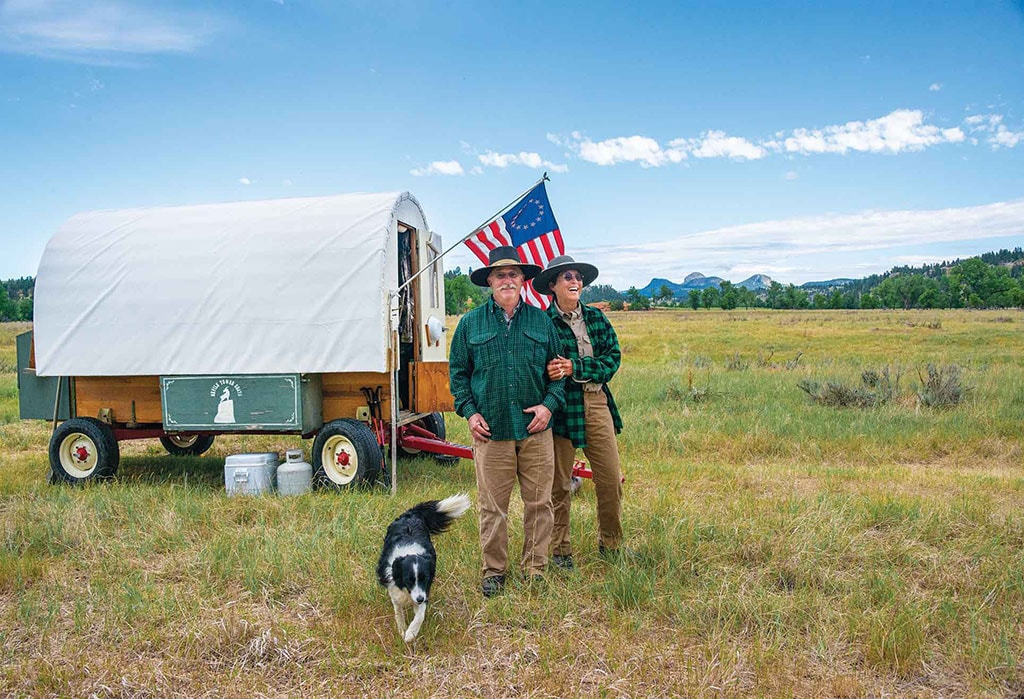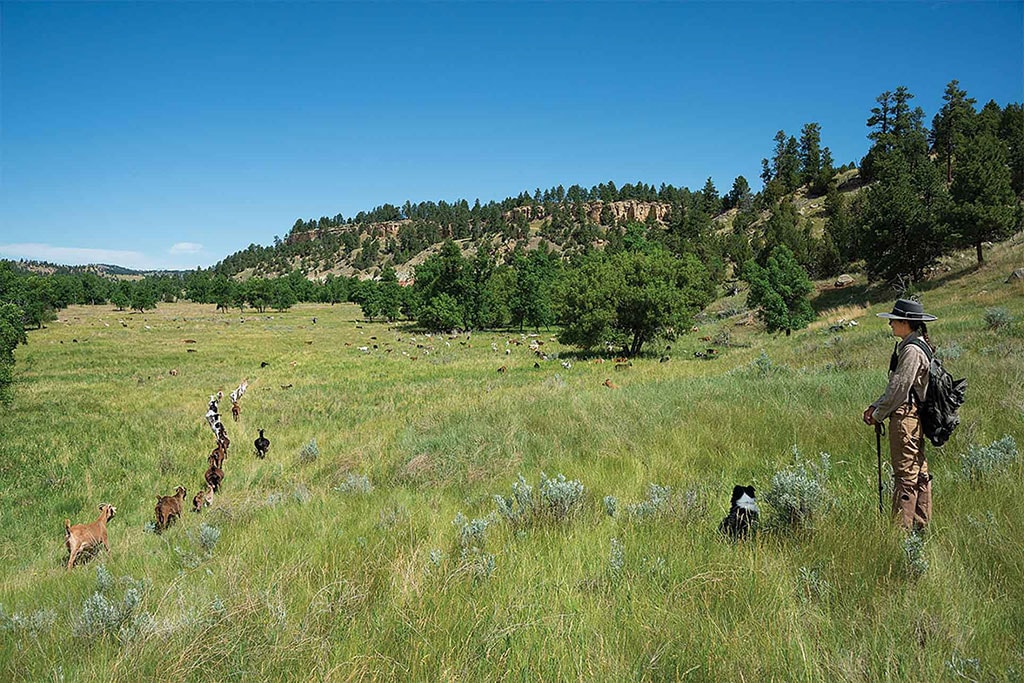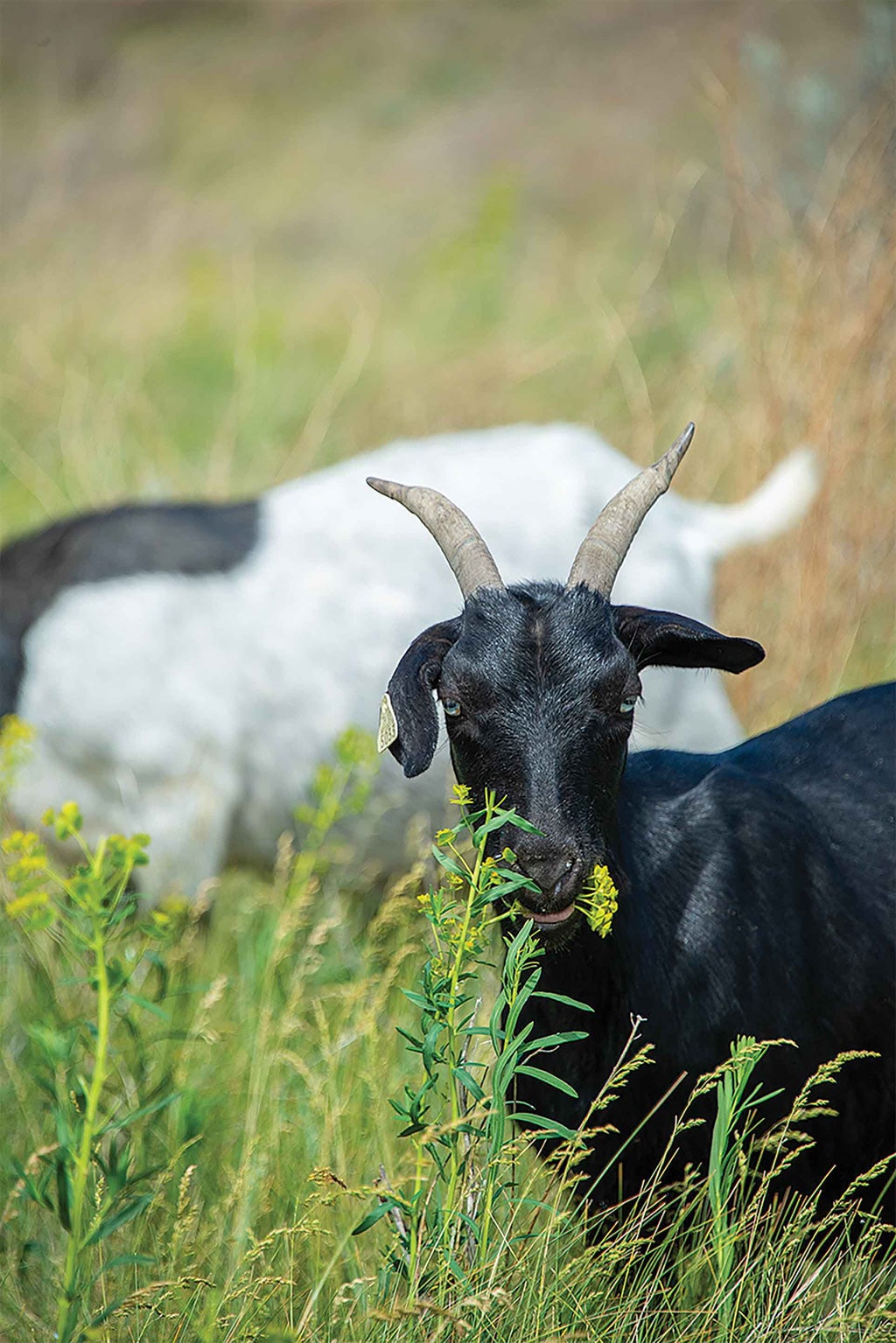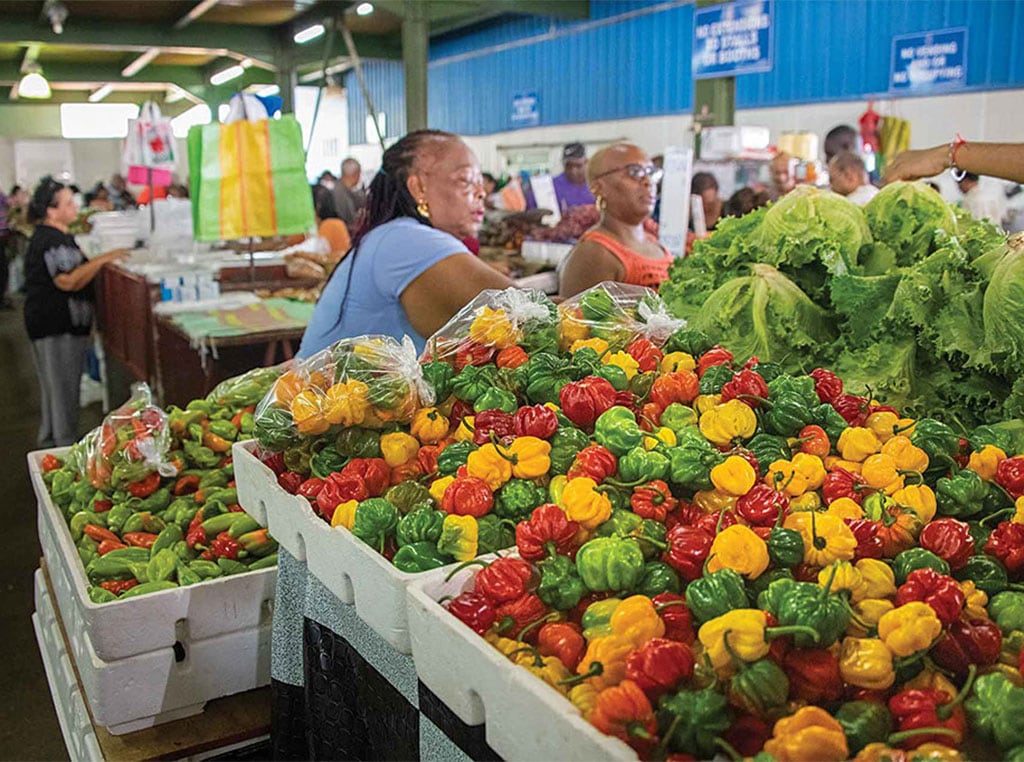
Agriculture, Specialty/Niche November 01, 2020
Browsing for Options
Goats clear the path for better forage, soils and ranching opportunities.
“NANNY, NANNY, NANNY!” Carolina Noya calls to her herd of goats, alerting them it’s time to head out for a day of work battling back persistent leafy spurge infestations. The 500 head of does, most with kids at side, gather to Carolina while her husband, Greg Fink, grumbles about the herd never coming when he calls.
Once the mobile electric paddock is opened, goats line out at Carolina and Greg’s direction. Browsing a few weeds along their way, they eventually make it to the yellow-tinged area where they will focus their grazing. The goats spread out, meandering back and forth from steep rocky hillsides down to the Belle Fourche river clipping off leafy spurge seed heads and stripping leaves, leaving latex-oozing stems behind.
“Goats eat very little grass, they far prefer the leafy spurge and other weeds,” Greg says. Sheep are also effective leafy spurge grazers, he says, but tend to eat more grass along with it. Goats focus on the leafy spurge, leaving more grass for cattle to graze.
Carolina and Greg’s herd cover thousands of acres of leafy spurge infested pastures on the ranches surrounding Devils Tower, Wyoming, each year.

Carolina Noya and her border collie, Pinchy, keep the herd moving to the target grazing area.
Ogden Driskill utilized their herd for many years as part of his family’s ongoing war with the invasive weed—a battle that’s raged for 100 years.
“They treated it with diesel fuel and early chemical treatments in the 1920s. That slowed it a little, but the next generation didn’t have much luck and it spread. By 1980 my father estimated we had lost 90% of the carrying capacity on the ranch,” Driskill says.
For the next 20 years they aerially applied herbicide, which resulted in nearly a 100% loss of deciduous trees on their creeks and an 80% decrease of pine trees. The losses to friendly fire were tough to take.
“My father gave up and started spraying just the minimum to maintain grazing,” he says. When Driskill took over, he started his own spray company and eventually introduced sheep and goats, which returned about 80% of the ranch carrying capacity.
Though successful, predators and the labor needed for goat herding led him away from the tactic — until Carolina and Greg came along with herd and herders as a joint package.
“If a fence won’t hold water it won’t hold goats,” Greg laughs. They also constantly move as they graze. An unsupervised goat herd is likely to end up in the next county if not the next state. Best results for leafy spurge control require some active supervision to keep the herd concentrated.
Carolina and Greg have embraced the herding lifestyle. They set up camp in a traditional sheep wagon and stay with the goats and their guard and herd dogs constantly from spring through fall.
Herding is just another in a long list of interesting professions for the pair who met as flying grooms — people who care for horses transported by plane. They purchased land near Carlile, Wyoming, and intended to settle into traditional cattle production.

The goats move constantly across the landscape in a relentless pursuit of leafy spurge.
They planned to lease land and run cattle as is standard in the area. After attending a holistic ranch management course, they realized that may not be the best option with limited acres and tough competition for leases.
Instead, they recognized goats were a niche few were taking advantage of that could open options for them and their neighbors.
“We’re able to hire out our services while getting forage for our herd. The rancher gets more grass and improved soil quality,” Carolina says. “It’s mutually beneficial.”
Quick Draw. Leafy spurge is the first plant up in the spring and quickly outcompetes cool season grasses, Greg explains. The goal with the goats is to graze the leafy spurge to stunt it and let the cool-season grasses get a good start to outcompete the invader.
“Ideally, you graze leafy spurge twice per year. When overgrazed, it taps reserves depleting roots, thinning the stand and reducing seed production,” Greg says seeds are long lived, and extensive rhyzomatous roots dig 15 feet into the soil profile.
“There’s no getting rid of it. You have to learn to live with it,” Carolina says. “But leafy spurge puts the system out of whack. You have to have something to eat it or trample it to keep it in check.”
Goats are an affordable option. Driskill estimates aerial chemical applications run $15-$20 per acre, ground $40-$50. Goats cost $4 per acre and, in Wyoming, qualify for weed control cost-share programs. “It’s an economical and effective option,” Driskill says.
There are soil health benefits, too. “Leafy spurge roots pull nutrients from deep in the soil. The goats cycle those nutrients to the topsoil and stress the plant so it digs deeper into root stores,” Greg says. “Then, more grass can grow, gather more energy through photosynthesis and put down more roots which helps improve soil health and forage production.”
“We may not kill leafy spurge, but we help find a balance and return grass production to the land we cover,” Carolina says.
Read More

Sustainability
Propelling Your Farm Through Change
Take a boost from renewable energy projects.

